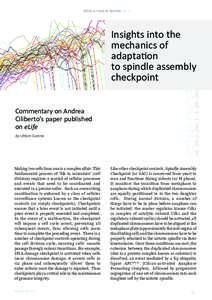<--- Back to Details
| First Page | Document Content | |
|---|---|---|
 Date: 2015-01-19 02:09:52Cell biology Biology Cell cycle Proteins Mitosis Spindle checkpoint CDC20 Mad2 Mad1 Spindle apparatus Kinetochore BUB3 |
Add to Reading List |
| First Page | Document Content | |
|---|---|---|
 Date: 2015-01-19 02:09:52Cell biology Biology Cell cycle Proteins Mitosis Spindle checkpoint CDC20 Mad2 Mad1 Spindle apparatus Kinetochore BUB3 |
Add to Reading List |